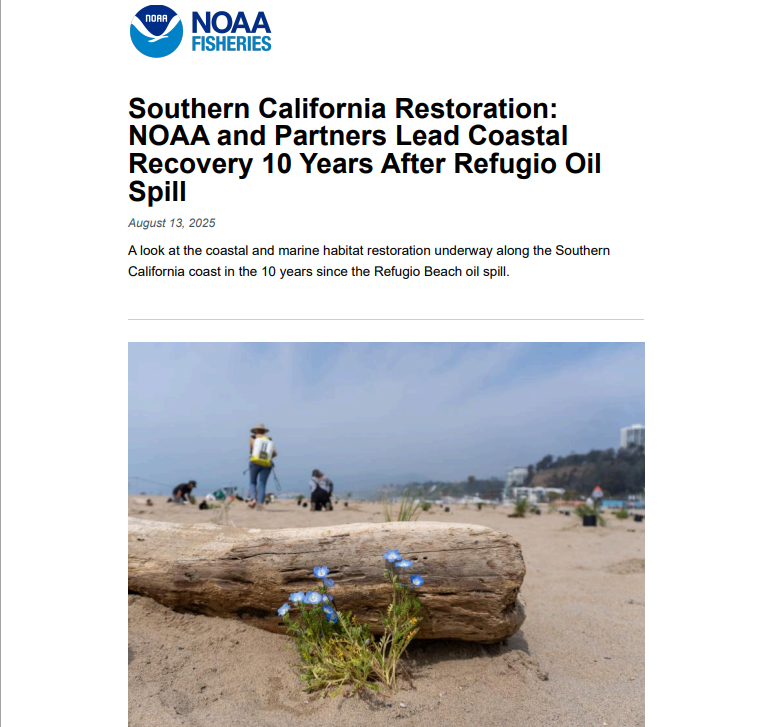Ten years after the Refugio Beach oil spill injured a stretch of California’s coastline, NOAA commemorates a decade of restoration progress. This work continues to heal marine ecosystems, rebuild fisheries and wildlife populations, and reconnect communities with coastal habitats.
On May 19, 2015, a ruptured pipeline near Refugio State Beach—just outside Santa Barbara—released more than 100,000 gallons of crude oil. The oil flowed through storm drains and ravines into the Pacific Ocean. It contaminated sensitive rocky intertidal zones, sandy beaches, and nearshore waters. It injured fish, seabirds, and marine mammals, and forced closures of fisheries, beaches, and coastal recreation areas.
Through the Natural Resource Damage Assessment process, NOAA led the assessment of how the oil spill harmed the ecosystem and impacted human uses, such as recreation. In 2020, NOAA and other state and federal agencies secured a $22.3 million settlement with Plains All American Pipeline, the party responsible for the spill. Since then, we have managed the use of settlement funds to restore the impacted habitats and help coastal communities recover.
Jen Boyce, marine habitat resource specialist with the Office of Habitat Conservation, says, “These projects continue to improve the health and fortitude of these critical habitats. We already see the impact they’ve had, from the brown pelicans breeding successfully on Anacapa Island, to the rocky reefs that once again support red abalone, and to native dune habitat taking shape at Santa Monica beach. Signs of recovery are everywhere.”
